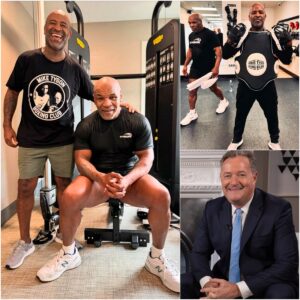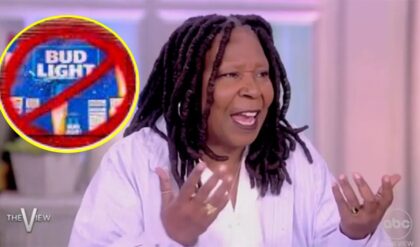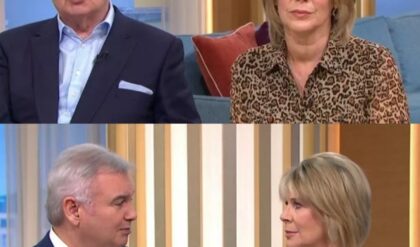NFL owners have approved a rule proposal to ban the swivel hip-drop tackle, the league announced Monday.
The violation will result in a 15-yard penalty if flagged in games, but Troy Vincent, the NFL’s executive vice president of football operations, strongly implied last week that it is likely to be enforced similarly to the “use of helmet” rule, which typically leads to warning letters and fines in the week after a game rather than flags during play.
In addition, two other proposals were approved:
Teams will receive a third challenge after one successful challenge. Previously, teams had to be successful on two challenges to receive a third. The proposal was submitted by the Lions.
If there is a double foul during a down in which there is a change or changes of possession, including if one of the fouls is a post-possession foul by a team during a scrimmage kick, the team last gaining possession will keep the ball after enforcement for its foul, provided it did not foul before last gaining possession.
The hip-drop tackling ban proposal was written to address only a subset of the rugby tackling style that has spread around the NFL in recent years, competition committee chairman Rich McKay said last week.
The tackling technique often results in lower-body injuries. The rule requires officials to note two actions: If a defender “grabs the runner with both hands or wraps the runner with both arms” and also “unweights himself by swiveling and dropping his hips and/or lower body, landing on and trapping the runner’s leg(s) at or below the knee.”
On Monday, McKay clarified that Monday’s rule change doesn’t eliminate the hip-drop tackle — only the “swivel technique that doesn’t get used very often.”
“When it is used, it is incredibly injurious to the runner — the runner is purely defenseless. I’ve heard defenders say before and I hear them — ‘Hey, you’re putting me in a really tough spot, you’re saying I can’t hit here and what do I do?’ My response has as always been, ‘Well, you can’t do that.’ That’s just because the guy you’re hitting is defenseless, has no way to protect himself,” McKay said, according to NFL.com.
“So, we’ve got to protect him. You’ve got to come up with other ways and you know what, they do. Yes, we outlawed the hip-drop, but what you may think are the drag-from-behind where he falls on the — that’s still a tackle. This is only that tackle where the player is lifting themselves in the air and then falling on the legs.”
NFL executive vice president Jeff Miller said there were 230 instances of the tackling technique occurring during a game last season, with 15 players missing time as a result.
The league played a video during a news conference to show six specific plays in which the hip-drop tackle was used in games, with tight end Drew Sample, running back Tony Pollard, receiver Tyler Boyd, quarterback Geno Smith and quarterback Ryan Tannehill all being on the receiving end of the now-illegal hit.
NFL teams will continue to receive videos showing illegal hits and ways to make tackles within the rules.
“It’s a new rule, so they’ll not have seen it,” McKay said about officiating the penalty. “This is never practiced; nobody does this in practice. There’s never a player that’s going to use this tactic on a player on his own team in a practice, so they’re never going to see it. They’re only going to see it in the game. We will tell them, ‘Listen, this is a penalty on the books. You can call it. You got to see all three elements of what’s going on here. You got to see him grab him. You got to see him control them. You got to see him swivel himself up in the air and you got to see him go unweighted. You don’t see it, don’t call it.’
“We’re going to take all these tapes that you’ve seen. … We’re going to take them all to the clubs and show them: This is what we don’t want. This is what a foul looks like.”
The NFL Players Association joined many current and former players in objecting to the proposal last week. In a statement posted to social media, the NFLPA said the rule would cause confusion among players, coaches, officials and fans.
On Monday, former player J.J. Watt was among those expressing displeasure with the owners’ vote on the tackling technique, posting to X, “Just fast forward to the belts with flags on them…”
Current players also weighed in on X, including the Detroit Lions’ DJ Reader, Philadelphia Eagles’ Darius Slay and the Miami Dolphins’ Jevon Holland:
McKay said Monday that owners did not vote on the proposal to modify the kickoff; a vote could still take place Tuesday, however.
McKay said there’s urgency to vote on the complicated new kickoff rule this week because it could impact the way teams select players next month in the NFL draft.
“I like voting on it sooner rather than later because there’s no question that bringing the play back, we had 1,970 touchbacks last season, so if you bring the play back in, let’s just say that 1,200 of those become returns, the person you’re going to have as a returner is going to matter more,” McKay said. “And we do have a draft coming up. And we do have college free agency coming up. So, I think personnel people need to know is this play going to be in or out, and that would lead me to want to have the vote sooner.”
The competition committee’s proposal would move the majority of the kicking and return teams downfield to minimize high-speed collisions.
The kicker would continue to kick from the 35-yard line, but the other 10 players would line up at the receiving team’s 40-yard line. At least nine members of the return team would line up in a “setup zone” between the 35- and 30-yard lines. Up to two returners can line up in a “landing zone” between the goal line and the 20-yard line. No one other than the kicker and returner(s) can move until the ball hits the ground or hits a player inside the landing zone. Touchbacks would be marked at the 30-yard line, and no fair catches would be allowed.
“This is our chance to keep special teams in the game,” McKay said. “Special teams has been a part of the game forever. And, if you lose the kickoff, in our mind, you really pretty much eliminated special teams and put it on a punt play. And so that’s what we’re trying to, get through and figure out if we can get to 24 votes.”
All rules proposals require 24 out of 32 votes for approval.
News
ENGLAND fans at home and in Germany are gearing up for the Three Lions’ crunch Euros quarter-final with Switzerland – with kick-off less than an hour away.
ENGLAND fans at home and in Germany are gearing up for the Three Lions’ crunch Euros quarter-final with Switzerland – with kick-off less than an hour away. Supporters are packing out the streets of Dusseldorf ahead of this afternoon’s knock-out game….
Mike Tyson Warns Jake Paul: “HIDE WELL, DON’T LET ME CATCH YOU”
In a recent statement that has sent shockwaves through the boxing world, legendary fighter Mike Tyson issued a stark warning to Jake Paul ahead of their anticipated showdown. Tyson, known for his intimidating presence and formidable boxing skills, didn’t mince…
Logan Paul INSTRUCTS Jake Paul On How To Evade Mike Tyson’s Punches DROP HIS PANTS And RUN As Fast As
In a recent YouTube video, Logan Paul shared some shockingly candid advice for his younger brother Jake Paul on how to handle an encounter with boxing legend Mike Tyson. According to Logan, the best way for Jake to dodge Tyson’s…
(+VIDEO)Mike Tyson BRUTALLY HONEST On Ryan Garcia Failed DR*G Test Against Devin Haney
In an explosive revelation that has the sports world reeling, boxing legend Mike Tyson has openly criticized the handling of Ryan Garcia’s failed drug test prior to his highly anticipated bout against Devin Haney. The incident, which has cast a…
Coach Mike Tyson Shares CONFIDENTLY When Predicting That Mike Will ‘KO In Round 1’ Against Jake Paul In An ONLINE INTERVIEW With Piers Morgan
In a riveting online interview with Piers Morgan, Coach Mike Tyson exudes unwavering confidence as he forecasts a swift victory for boxing legend Mike Tyson in his upcoming bout against Jake Paul. The anticipation surrounding this highly anticipated match has…
Conor Mcgregor And His Trainer Make A SURPRISING STATEMENT About The Fight Between Mike Tyson And JakeA Paul And The Issue Surrounding Fight Watchers
In a recent turn of events, Conor McGregor and his renowned trainer have stirred up the boxing world with their unexpected commentary on the much-anticipated showdown between boxing legend Mike Tyson and the polarizing YouTube sensation turned boxer, Jake Paul….
End of content
No more pages to load









